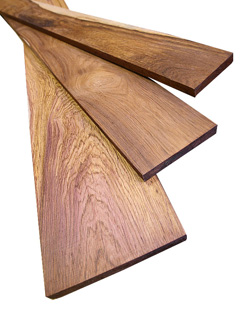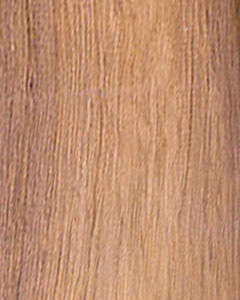 |
|
https://edibleplants.org/ |
 |
| https://edibleplants.org/ |
Translate this page:
Summary
Found in Central America specifically in Belize, Dalbergia stevensonii or commonly known as Honduras Rosewood is a slow growing, medium-sized tree of about 30 m in height with a trunk diameter of up to 90cm in diameter. It has a symbiotic relationship with certain soil bacteria that forms nodule on the roots and fix atmospheric nitrogen. Wood is used for manufacturing musical instruments, furniture, cabinets, billiard and pool tables, jewellery trays and cases, canes, novelties, etc.
Physical Characteristics

 Dalbergia stevensonii is an evergreen Tree growing to 20 m (65ft) by 20 m (65ft) at a slow rate.
Dalbergia stevensonii is an evergreen Tree growing to 20 m (65ft) by 20 m (65ft) at a slow rate.
See above for USDA hardiness. It is hardy to UK zone 10. The flowers are pollinated by Insects.
It can fix Nitrogen.
Suitable for: light (sandy), medium (loamy) and heavy (clay) soils and prefers well-drained soil. Suitable pH: mildly acid, neutral and basic (mildly alkaline) soils. It cannot grow in the shade. It prefers moist soil.
UK Hardiness Map
US Hardiness Map
Synonyms
Plant Habitats
Edible Uses
References More on Edible Uses
Medicinal Uses
Plants For A Future can not take any responsibility for any adverse effects from the use of plants. Always seek advice from a professional before using a plant medicinally.
None known
References More on Medicinal Uses
The Bookshop: Edible Plant Books
Our Latest books on Perennial Plants For Food Forests and Permaculture Gardens in paperback or digital formats.

Edible Tropical Plants
Food Forest Plants for Hotter Conditions: 250+ Plants For Tropical Food Forests & Permaculture Gardens.
More

Edible Temperate Plants
Plants for Your Food Forest: 500 Plants for Temperate Food Forests & Permaculture Gardens.
More

More Books
PFAF have eight books available in paperback and digital formats. Browse the shop for more information.
Shop Now
Other Uses
Furniture Wood
Other Uses: The heartwood is pinkish brown to purple with irregular black markings or zones, which are independent of the growth rings - these alternate dark and light bands give the wood an unusual and very attractively figured appearance[ 378 ]. The heartwood is sharply demarcated from the 25 - 50mm wide sapwood, which is white marked with yellow vessel lines when first cut, but turning yellow rather quickly afterwards[ 378 ]. The texture is medium; the grain straight to slightly roey; lustre is low to medium; the wood has no distinctive taste, but fresh heartwood has a rose-like odour which generally dissipates with age. It is this vanishing rose-like odour that is responsible for the name rosewood, not the presence of rose-like flowers as is commonly supposed[ 378 ]. The wood is very hard and heavy; the heartwood is highly durable in contact with the soil, although the sapwood soon decays[ 331 , 378 ]. Hardness makes this timber somewhat difficult to work - it is moderately difficult to saw and machine; it dulls cutting edges more readily than many other woods; ii planes well but must be held securely during planing to prevent vibration; it makes excellent turnings and finishes well, except, for some trouble with very oily specimens, but does not take a high natural polish[ 378 ]. Because of its unusual beauty and excellent, technical properties, Honduras rosewood is highly regarded for a number of specialized uses Manufacturers of musical instruments use the wood for finger boards for banjos, mandolins, and guitars, and for percussion bars in xylophones and other similar instruments. Well-figured wood is used also in guitar bodies, mandolin ribs, harp bodies, piano legs, piano pilasters, veneered piano cases, and organ stops. Some of the best figured wood is made into veneer for furniture, cabinets, carpet sweepers, billiard and pool tables, and bank and store fixtures. Darker and more highly figured wood is often used in brush backs, jewellery trays, and jewellery cases. Rosewood is employed in the manufacture of high-grade carpenter tools, and in other items like canes, moldings, picture frames, and novelties, and is used to some extent for molding, trim and other interior work in boats and shipbuilding. The rosewood from Brazil is used extensively for the handles of knives and small tools. Honduras rosewood should be equally suitable for this use[ 378 ].
Special Uses
Nitrogen Fixer
References More on Other Uses
Cultivation details
We have no specific information on this species, but members of this genus generally prefer a fertile, loam soil and a position in full sun[ 200 ]. This species has a symbiotic relationship with certain soil bacteria, these bacteria form nodules on the roots and fix atmospheric nitrogen. Some of this nitrogen is utilized by the growing plant but some can also be used by other plants growing nearby[].
References Carbon Farming Information and Carbon Sequestration Information
Temperature Converter
Type a value in the Celsius field to convert the value to Fahrenheit:
Fahrenheit:
The PFAF Bookshop
Plants For A Future have a number of books available in paperback and digital form. Book titles include Edible Plants, Edible Perennials, Edible Trees,Edible Shrubs, Woodland Gardening, and Temperate Food Forest Plants. Our new book is Food Forest Plants For Hotter Conditions (Tropical and Sub-Tropical).
Shop Now
Plant Propagation
Like many species within the family Fabaceae, once they have been dried for storage the seeds of this species may benefit from scarification before sowing in order to speed up germination. This can usually be done by pouring a small amount of nearly boiling water on the seeds (being careful not to cook them!) and then soaking them for 12 - 24 hours in warm water. By this time they should have imbibed moisture and swollen - if they have not, then carefully make a nick in the seedcoat (being careful not to damage the embryo) and soak for a further 12 hours before sowing[ K ].
Other Names
If available other names are mentioned here
Native Range
SOUTHERN AMERICA: Belize, Guatemala
Weed Potential
Right plant wrong place. We are currently updating this section.
Please note that a plant may be invasive in one area but may not in your area so it's worth checking.
Conservation Status
IUCN Red List of Threatened Plants Status : This taxon has not yet been assessed.

| Related Plants
|
| Latin Name | Common Name | Habit | Height | Hardiness | Growth | Soil | Shade | Moisture | Edible | Medicinal | Other |
| Dalbergia baronii | Palissandre rouge des marais, hitsika, sovodrano | Tree | 20.0 |
10-12
| M | LM | N | Mwe | 0 | 0 | 4 |
| Dalbergia cochinchinensis | Siam Rosewood, Thailand Rosewood | Tree | 25.0 |
10-12
| S | LMH | N | M | 0 | 0 | 4 |
| Dalbergia greveana | Madagascar Rosewood | Tree | 15.0 |
10-12
| S | LMH | N | DM | 0 | 2 | 4 |
| Dalbergia hupeana | | Tree | 15.0 |
-
| | LMH | SN | M | 1 | 1 | 3 |
| Dalbergia latifolia | Black Rosewood, East Indian Rosewood, Kala sheeshan, Satisal | Tree | 30.0 |
10-12
| M | LMH | N | M | 0 | 2 | 4 |
| Dalbergia louvelii | Andramena, Volombodipona, Violet rosewood | Tree | 15.0 |
10-12
| M | LMH | N | M | 0 | 2 | 4 |
| Dalbergia melanoxylon | African Blackwood, Grenadilla, Mpingo | Tree | 6.0 |
10-12
| S | LMH | N | DM | 0 | 2 | 5 |
| Dalbergia monticola | Hazovola, tsiandalana, voamboana | Tree | 12.0 |
10-12
| S | LMH | N | M | 0 | 0 | 4 |
| Dalbergia nigra | Brazilian Rosewood | Tree | 20.0 |
10-12
| M | LMH | N | DM | 0 | 0 | 4 |
| Dalbergia oliveri | Redwood | Tree | 23.0 |
10-12
| S | LMH | SN | M | 0 | 0 | 4 |
| Dalbergia retusa | Cocobolo | Tree | 20.0 |
10-12
| S | LMH | N | M | 0 | 0 | 4 |
|
Growth: S = slow M = medium F = fast. Soil: L = light (sandy) M = medium H = heavy (clay). pH: A = acid N = neutral B = basic (alkaline). Shade: F = full shade S = semi-shade N = no shade. Moisture: D = dry M = Moist We = wet Wa = water.
Now available:
Food Forest Plants for Mediterranean Conditions
350+ Perennial Plants For Mediterranean and Drier Food Forests and Permaculture Gardens.
[Paperback and eBook]
This is the third in Plants For A Future's series of plant guides for food forests tailored to
specific climate zones. Following volumes on temperate and tropical ecosystems, this book focuses
on species suited to Mediterranean conditions—regions with hot, dry summers and cool, wet winters,
often facing the added challenge of climate change.
Read More
Expert comment
Author
Standl.
Botanical References
Links / References
For a list of references used on this page please go here
A special thanks to Ken Fern for some of the information used on this page.
Readers comment
| Add a comment |
|
If you have important information about this plant that may help other users please add a comment or link below. Only comments or links that are felt to be directly relevant to a plant will be included. If you think a comment/link or information contained on this page is inaccurate or misleading we would welcome your feedback at [email protected]. If you have questions about a plant please use the Forum on this website as we do not have the resources to answer questions ourselves.
* Please note: the comments by website users are not necessarily those held by PFAF and may give misleading or inaccurate information.
To leave a comment please Register or login here All comments need to be approved so will not appear immediately.
|
Subject : Dalbergia stevensonii
|
|
|
|